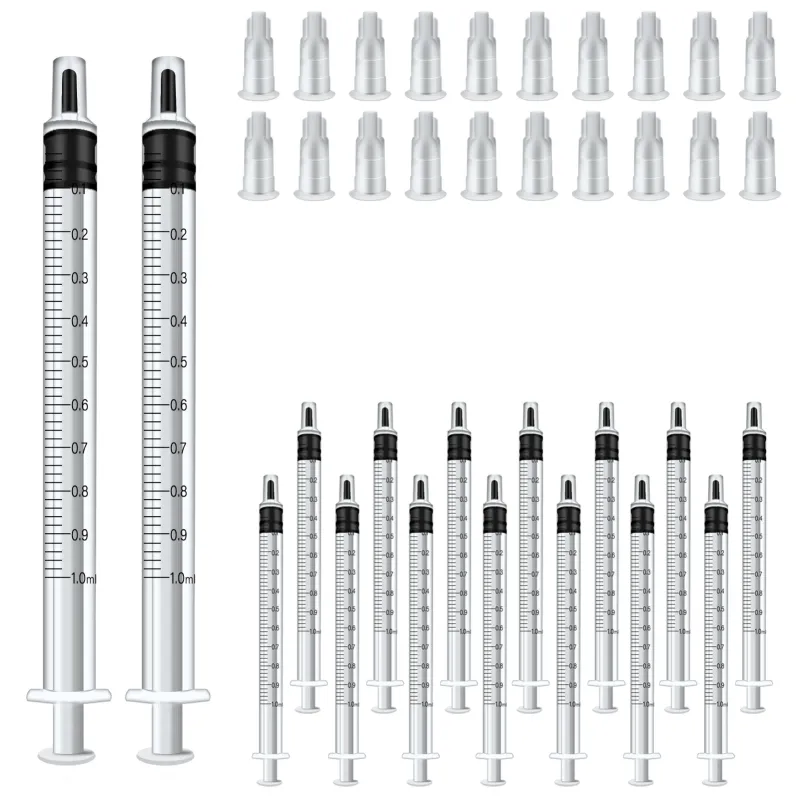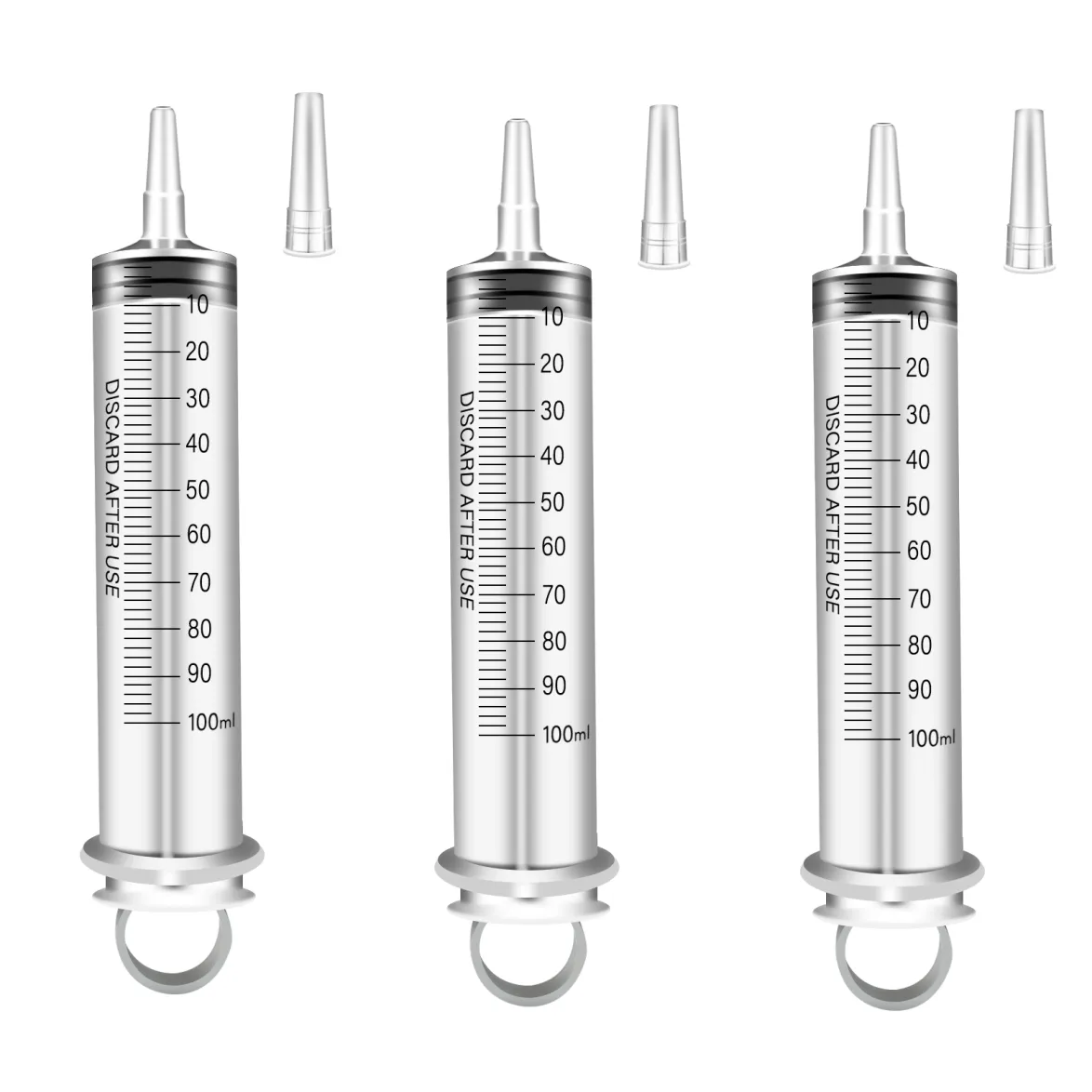Essential Applications of Medical Feeding Syringes in Modern Healthcare
Feeding syringes have become indispensable tools in healthcare settings, playing a crucial role in providing nutrition and medication to patients who cannot feed themselves conventionally. These specialized medical devices ensure precise delivery of nutrients and medications while promoting patient safety and comfort. Understanding their various applications and proper usage is essential for healthcare providers, caregivers, and patients alike.

Clinical Applications in Healthcare Settings
Hospital and Acute Care Usage
In hospital environments, feeding syringes serve multiple purposes beyond basic nutrition delivery. Medical professionals rely on these instruments for accurate medication administration, especially for patients with swallowing difficulties or those who require precise dosing. The controlled delivery mechanism of feeding syringes allows healthcare providers to administer exact amounts of liquid medications, ensuring optimal therapeutic outcomes.
Additionally, feeding syringes are vital for patients recovering from surgical procedures or those with temporary feeding difficulties. The graduated markings on these syringes enable precise measurement of nutritional supplements and ensure patients receive adequate caloric intake during their recovery period.
Long-term Care Applications
In long-term care facilities, feeding syringes become essential tools for managing residents with chronic conditions affecting their ability to eat normally. These devices facilitate the administration of pureed foods, thickened liquids, and specialized nutritional formulas through feeding tubes or direct oral feeding.
Care staff regularly use feeding syringes to maintain proper hydration levels and ensure residents receive their prescribed medications in liquid form. The versatility of these syringes allows for both bolus feeding and continuous feeding methods, adapting to each patient's specific needs and medical requirements.
Pediatric Care and Feeding Solutions
Infant Feeding Management
When it comes to infant care, feeding syringes prove invaluable for various situations. They are particularly useful for premature babies or infants with feeding difficulties, allowing precise delivery of breast milk or formula. Healthcare providers and parents can carefully control the flow rate, reducing the risk of aspiration and ensuring comfortable feeding sessions.
These syringes also play a crucial role in supplemental feeding strategies, especially for babies transitioning between different feeding methods. The accurate measurement capabilities help track intake volumes, which is essential for monitoring growth and development in young patients.
Special Needs Pediatric Applications
Children with special needs often require specialized feeding solutions, and feeding syringes provide a reliable method for delivering nutrition. Whether managing conditions like cerebral palsy or dealing with temporary feeding challenges, these syringes offer caregivers precise control over food and fluid administration.
The ergonomic design of modern feeding syringes makes them particularly suitable for pediatric use, with features that promote both comfort and safety. Healthcare providers can easily adjust feeding rates and volumes to accommodate each child's unique requirements and tolerance levels.
Veterinary Medicine Applications
Small Animal Care
Veterinary professionals frequently utilize feeding syringes when treating small animals unable to eat independently. These devices are particularly valuable for administering medication, supplements, and emergency nutrition to cats, dogs, and other small pets. The precise measurements ensure accurate dosing, while the gentle delivery system minimizes stress on the animal.
In rehabilitation settings, feeding syringes help manage the nutrition of recovering animals, especially those dealing with post-surgical complications or chronic conditions affecting their ability to feed normally. The flexibility of these tools allows veterinarians to adapt feeding strategies based on each animal's specific needs and recovery progress.
Exotic Pet Care
When caring for exotic pets, feeding syringes become essential tools for providing specialized diets and medications. Birds, reptiles, and small mammals often require precise portions of liquid nutrition or medication, which these syringes can deliver accurately and safely.
The controlled delivery mechanism helps prevent overfeeding and ensures that even the smallest exotic pets receive appropriate nutrition. Veterinary specialists rely on these tools to maintain the health of various species, each with unique dietary requirements and feeding challenges.
Home Healthcare Applications
Patient Self-Administration
For individuals managing their care at home, feeding syringes provide independence and control over nutrition and medication intake. Patients with temporary or permanent feeding tubes can safely administer their prescribed formulas and medications using these devices. The clear markings and easy-to-use design make them accessible for self-administration with proper training.
Home healthcare providers often train patients and family members in the proper use of feeding syringes, emphasizing proper cleaning, storage, and administration techniques. This empowerment allows patients to maintain their care routine effectively while ensuring safety and proper nutrition.
Caregiver Support Tools
Family caregivers rely on feeding syringes to provide essential care to loved ones with feeding difficulties. These tools simplify the process of administering nutrition and medications, reducing the stress associated with home care responsibilities. The durability and ease of cleaning make them practical for daily use in home settings.
Support networks and healthcare providers often offer training programs to help caregivers master the use of feeding syringes, ensuring confident and competent care delivery. This education includes proper positioning, feeding techniques, and troubleshooting common challenges that may arise during home care.
Frequently Asked Questions
How should feeding syringes be properly cleaned and maintained?
Feeding syringes should be thoroughly cleaned after each use with warm, soapy water and rinsed completely. All parts should be air-dried before reassembly. For syringes used in medical settings, follow specific sterilization protocols. Regular inspection for wear and tear is essential, and syringes should be replaced according to manufacturer guidelines or if any damage is observed.
What are the different sizes of feeding syringes available?
Feeding syringes come in various sizes ranging from 1ml to 60ml, with common sizes including 5ml, 10ml, 20ml, and 35ml. The choice of size depends on the specific application, with smaller syringes typically used for medication delivery and larger ones for nutritional feeding. Some syringes also feature specialized tips or attachments for specific feeding applications.
How can you prevent clogging in feeding syringes?
To prevent clogging, flush the syringe with warm water before and after each use. When administering medications or thickened liquids, ensure proper dilution and mix thoroughly. Regular cleaning and maintenance help prevent buildup, and using the appropriate size syringe for the substance being administered can also reduce clogging risks. If clogging occurs, never force the plunger as this could cause damage or unsafe delivery.

